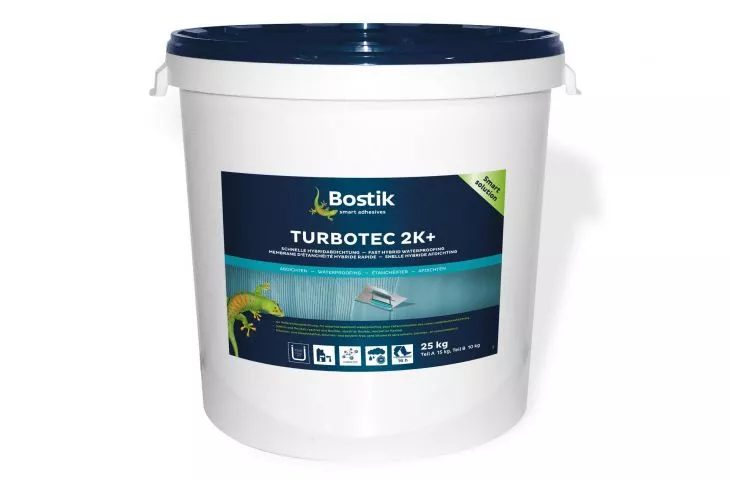A soggy basement, a leaking roof, unsightly efflorescence on the walls or rainwater collecting on the balcony are problems often faced by owners of old houses. However, moisture is a problem that also affects new construction. To avoid unpleasant situations and effectively protect the house from moisture, vertical and horizontal insulation should be carried out in accordance with the rules of the art and with the use of appropriate materials. How to do it? Roland Paprzycki, Bostik's expert, provides tips.
Waterproofing from the ground up
Building a house involves a great deal of time, labor and money, so it is worth doing it decently and taking care at every stage to ensure that the building will last in excellent condition for many years. However, improperly executed waterproofing can make your dream home vulnerable to mold growth, structural weakening and partition degradation from the beginning.
According to general principles, the process of securing a building against water and moisture should be carried out already at the construction stage and should concern, among other things, such elements as the foundation slab, retaining walls, external basement walls and plinths, and further - the joints of walls and floors or the balcony and terrace, says Roland Paprzycki, Bostik expert.
The key to success, therefore, is to plan the work properly and include all areas that are exposed to precipitation, groundwater, and pressurized water.
An extremely important stage is also the selection of the right sealant. First of all, you need to ensure that it is highly flexible, works quickly and effectively, and is easy to apply. This can be a good quality bituminous compound or a special hybrid wall sealant, such as Bostik's Turbotec 2K+. This product is free of bitumen and solvents, forms a flexible coating, is resistant to rain in as little as two hours, and reaches full load after 16 hours. Moreover, it is suitable for use on a wide variety of surfaces, including bricks, concrete, hollow blocks, chamotte and lime-sand bricks, precast concrete blocks, as well as mixed masonry and existing bitumen-based coatings on mineral substrates," adds the Bostik expert.
It is also important to properly prepare each surface before applying the product - it must be absorbent, strong, stable, level and load-bearing. All cracks, fissures and brittle joints must be filled with a special mortar, edges must be machined and irregularities leveled. This will make the waterproofing more durable and effective. It is worth remembering that the application of each preparation should be done exactly as recommended on the manufacturer's packaging.
In the case of Bostik's Turbotec 2K+ hybrid sealer, the liquid component should be added to the bucket and mixed briefly. Then add the powder component to the bucket and stir with a slow-speed mixer for at least 2 minutes. The resulting sealing mortar should be applied with a spatula, bench, trowel or spraying machine. It should also be borne in mind that the sealant should be applied in two stages to achieve complete coverage of the surface. The layers must achieve a minimum thickness at each point, and there should be a minimum gap of two hours between applications. This will give the preparation time to solidify, and the end result will be what we assumed, i.e. we will get a durable and effective waterproofing, Bostik's expert explains.
To the rescue of damp walls
Making a durable and long-lasting waterproofing in a new house is a task that is not too complicated, but requires precision, consistency in action and the use of the right product.
A somewhat more difficult challenge faces the owners of old buildings or apartments in tenements, where moisture has already managed to wreak havoc. Fortunately, also in such cases it is possible to achieve success and protect walls and foundations from water, says specialist Roland Paprzycki of Bostik.
The most important step in the waterproofing process in places where water has already left its negative mark is the proper preparation of the substrate and the application to it of a product dedicated specifically to old walls. What does this look like in practice?
The existing plaster should be scraped to about 80 cm above the visible moisture zone. If an even earlier layer of plaster shows up, it should also be removed in its entirety. It is best to clean the wall mechanically, get rid of the brittle joints to a depth of 2 cm, and then fill them with a suitable mortar. Once this is done, the exposed surface should be protected with a preparation for repairing damp, salt-saturated masonry," says Bostik's expert.
The surface prepared in this way is ready for the application of a sealant, such as Bostik's Kiesey Injektcreme silane and siloxane-based water repellent cream. It can be used wherever the original horizontal masonry insulation is no longer watertight, or where the building has no horizontal sealant at all.
The sealing product, called Kiesey Injektcreme, can penetrate the smallest pores and capillaries of the building material thanks to its low viscosity, and it stays in the hole thanks to its creamy consistency. Upon contact with moisture, it forms a sealing layer on the surface, while starting the process of drying the walls. The grout is injected by applying it once to single-row drilled holes using a cartridge or vacuum grout gun. For best results, the holes should have a diameter of about 12 mm, be made at a height of 15 cm above the top edge of the ground (wall-to-floor cap) and at 15 cm intervals, explains a Bostik brand expert.
Moisture insulation is a reliable way to avoid many problems and dangerous damage to the structure of the house. Therefore, it is worth ensuring that - both in new and old buildings - it is done in accordance with the art and with the use of appropriate products.
Bostik's expert advice will certainly help with this.
For more information, visit the company's BOSTIK POLAND page on the A&B portal.















